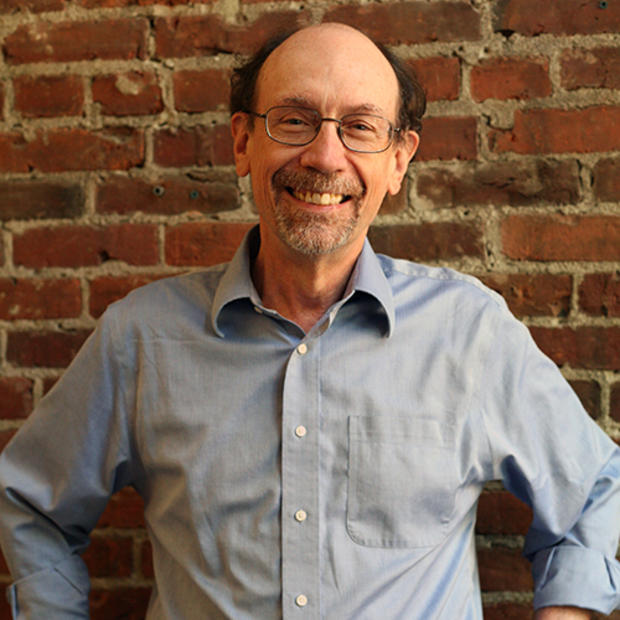Mayor Mike McGinn'ês proposal to immediately ask Seattle voters to tax themselves for the reconstruction of the downtown seawall has what some fear could be a curiously grab-and-go aspect. The new mayor has decided to ask for funding without waiting for new designs on the seawall replacement, raising questions about how well the waterfront will work for people, business, sea life, and the environment generally for decades to come. Another set of questions: How well will the new mayor work with his partners on this key project?
The mayor said that safety concerns are so large that speed is paramount. In his press conference on Thursday morning, he spoke about a 1-in-10 chance of seawall failure in the next 10 years, and the likelihood that a seawall failure would bring down the nearby Alaskan Way Viaduct.
"It would be irresponsible to not address this basic issue of public safety immediately,'ê the mayor said in a statement about his plan to put a $241-million bond issue for the seawall replacement on the ballot in May. On Friday, McGinn spokesman Aaron Pickus said the administration is confident voters will approve a bond issue, which requires 60 percent approval. The alternative would be a levy measure, requiring only a majority of voters to say yes. A bond is preferable, he said, because it is paid off over 30 years, meaning the yearly taxes would be much lower than for a levy, which would be collected over nine years.
The administration believes it can explain "that this is a very basic public safety need," Pickus said.
While the media are busy watching to see if the new mayor will try to derail the agreed-upon plan to replace the viaduct with a tunnel, that doesn'êt seem to be part of the proposal. For a mayor who used his inauguration to say he wanted to engage the citizens, the immediate resort to the ballot box probably fits, perhaps in a way city residents won'êt soon forget. But the comments about the proposal also made clear that he is moving quickly enough to have engaged in little or no serious outside consultations, even with city council.
From a key tunnel support group, the Greater Seattle Chamber of Commerce, the mayor'ês proposal drew a guarded but positive comment. Charles Knutson, a chamber vice president for policy, said, 'êGenerally speaking, we are pleased that Mayor McGinn is taking a step to secure funding.'ê
Knutson noted that the chamber had just learned of the mayor'ês ballot proposal and will examine it. There seemed to be a lot of that going around Tuesday. As Publicola reported, city council members had received essentially perfunctory notifications.
Cary Moon of the People'ês Waterfront Coalition, which has raised tunnel concerns while advocating strongly for more public spaces along the shore of Elliott Bay, said she had received a call the night before, with no opportunity to offer advice. She said she was 'êof two minds'ê about what she had seen of the proposal. The city is right to reassert that the waterfront and the seawall replacement are Seattle'ês business, she said. But she added that there are 'êsome huge risks with trying to do it quickly.'ê
So far, the city's designs for rebuilding the seawall have been 'ê1950s-style,'ê primarily involving tons of concrete, Moon said. A better design would provide more public access to the water'ês edge in significant segments, while adding at least some naturally sloped beaches, tidepools, and other environmental features to let sea life thrive. 'êThat is hard to do,'ê Moon said in touting a fish- and people-friendly replacement. 'êThat takes some creative engineering, and it takes time, because we are inventing something.'ê
Former mayor Charles Royer, a co-chair of a city-established Central Waterfront Partnerships Committee, also expressed concern about the speed. Both he and Moon spoke of the importance of a design that is a 'ê100-year'ê opportunity to create the city'ês future on the waterfront.
But Heather Trim of People for Puget Sound, a leader in advocating for a more natural waterfront along the lines of the reconstructed parts of the shore by the Olympic Sculpture Park, said she thought Royer'ês just-organized partnership committee might have to move faster than its December deadline for advising the city on waterfront questions. And she noted that the city late last year sent out requests for qualifications from potential teams of designers, with an emphasis on cutting-edge thinking.
'êWe see this as an opportunity for a fish- and people-friendly'ê seawall replacement, Trim said. She said People for Puget Sound received a high-level advance notice of the mayor'ês proposal, with the city'ês outgoing transportation director, Grace Crunican, talking to Executive Director Kathy Fletcher.
In his statement, McGinn said one of his first briefings in preparation for taking office was an alarming one about the seawall. 'êThe current plan will not see the completion of a new seawall for at least another six years,'ê he said. 'êBased on what I know now, that'ês not good enough.'ê
No one took issue with his safety concerns. Royer said, 'êI believe him when he says it is a security and safety issue, because that is what the engineers were telling me in 1985.'ê
But Royer also questioned why city taxpayers should bear the entire burden of the expense. He noted that the seawall replacement is important to the countywide Port of Seattle and the entire state's commerce, and that the U.S. Army Corps of Engineers will have a large role in the replacement process.


